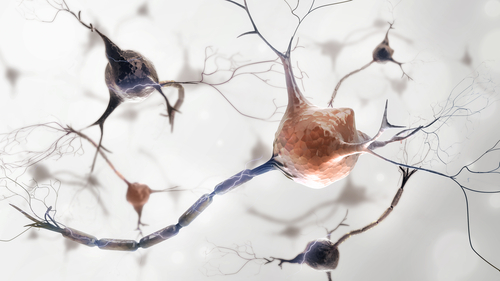Nerve Cells That Control Movement Change Size as ALS Progresses, Mouse Study Shows

Nerve cells that control movement change their size as ALS progresses, becoming larger than normal at first but then ending up much smaller, a mouse study showed.
An important finding was that the changes can prevent nerve cells from facilitating communication between the brain and muscles. The research provided scientists with a new understanding of the mechanisms of ALS and could open new treatment-development avenues.
The study, “The vulnerability of spinal motoneurons and soma size plasticity in a mouse model of amyotrophic lateral sclerosis,” was published in The Journal of Physiology.
A hallmark of ALS is the progressive death of movement nerve cells that leads to loss of muscle function.
Researchers at Wright State University in Dayton, Ohio, used a genetically engineered mouse model of the most aggressive form of ALS to evaluate changes in movement nerve cells over time.
Their evaluations covered four stages of the disease: the pre-symptom stage, the pre-symptom stage with early death of movement nerve cells, the symptom stage with 70% to 80% nerve cell death, and the end stage with full paralysis of limbs.
The analysis revealed that in the first two stages of the disease, movement nerve cells were 16% larger than those of healthy mice.
The opposite was true in the last two stages of the disease. In fact, the nerve cells were 40% smaller than those of normal mice. This could be due in part to nerve cell degeneration, the researchers said.
The team also compared the size of nerve cells in different nervous system locations. They discovered that the biggest change in size occurred in the spine’s lumbar region, which plays a key role in walking and is vulnerable when ALS progresses. In contrast, the smallest size changes were in movement nerve cells in the cervical region, which controls respiratory function and is known to be less affected by the disease.
Researchers said the findings suggest that movement nerve cells can change their characteristics according to their susceptibility to ALS, ultimately affecting their survival.
The team used a computer simulation program to estimate the effect that bigger nerve cells have on movement activity. The analysis showed that an increase in size can have a profound impact on nerve cell activity, preventing them from transmitting messages to muscle cells.
Collectively, the findings revealed a “novel form of plasticity in ALS” that could be a target for “altering motoneuron [movement nerve cell] function and survival,” the researchers wrote.
“This research approach could be applicable not only to ALS, but also to other neurodegenerative diseases, such as Alzheimer’s and Parkinson’s,” Sherif M. Elbasiouny, an assistant professor at Wright State, said in a press release. He was senior author of the study.
More research is needed to shed additional light on the cell mechanisms related to the size changes and confirm if the findings apply to humans with ALS, the team said.






